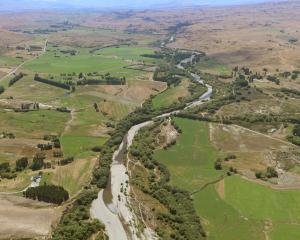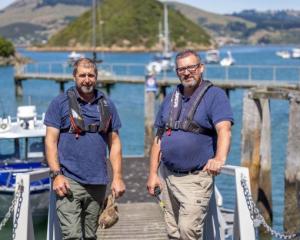North Otago has started counting the cost of four days of flooding, with fears the cost of repairs to roads and bridges could top $1 million.
The figure is unknown, with damage still hidden by water or yet to be fully appraised.
Otago river levels dropped quickly yesterday and flood waters were receding as the Waitaki District Council, Otago Regional Council and farmers began to assess the damage.
Waitaki District Council roading assets manager Geoff Young said the extent of damage to roads, culverts and bridges could not be fully assessed until flood levels had receded.
At this stage, "a guesstimate" was up to $1 million or more, although Mr Young said it was "impossible to make an accurate call on costs at this stage".
"It depends what we find when the water drops. For example, if we have lost a bridge, you could be talking half a million dollars alone. At this stage, we have at least two bridges that are under water (over the Kauru River on Switchback Rd and on Loop Rd off State Highway 85), if they are still there," he said.
Further damage could occur as the water drained away, with saturated pavement breaking up.
On Monday, the council would begin a more accurate assessment of the flood bill, first inspecting bridges to ensure structures and abutments were sound.
SH1 reopened yesterday, although a detour was in place along SH83 and Seven Mile Rd to avoid flood waters north of Pukeuri, where one section at Hilderthorpe remained covered by up to 1m of water.
The railway underpass at Alma on SH1 was reopened yesterday.
Rivers and streams, still well above normal levels, were dropping steadily.
The Kakanui River, which peaked at more than 900cumecs, was at 144cumecs at 2.30pm. The Kauru River, which peaked at more than 100cumecs, was at 11cumecs at 4.30pm.
Last night, the Shag, the Taieri at Outram, Tiroiti and Sutton and Pomahaka at Burkes Ford were still above their first warning levels.
Consumers on 10 North Otago rural water schemes were still being asked to conserve water because pumps had been switched off.
Schemes were being inspected yesterday but decisions still had to be made on when they would start operating again.
Oamaru Civil Defence headquarters closed last night after about 90 hours of activation, but staff were on stand-by.
It would reopen at 5am today.
Senior Sergeant Darryl Lennane, of Mosgiel, said police had started an investigation into the unauthorised propping up of the upper Taieri ponding area floodgates.
Otago Regional Council duty flood manager Matt Hickey said farmers faced much clean-up work. The council would be out surveying the damage to assess what work was needed.
The peak river flow for the Taieri River at Outram during this week's flood was 953cumecs, the seventh highest since records began in 1968.
Taieri farmer Colin Scurr said about eight farms at Riverside, near Outram, were affected.
If winter feed crops stayed under water for too long, they would be ruined, he said.
Farmers had transported cows to alternative grazing, and most should return when conditions improved.
However, some water-logged paddocks could not be used.
Farmers were still struggling with how quickly flood protection works at Riverside were breached, Mr Scurr said.
The flood protection scheme was designed to handle a flow of 1100cumecs in the Taieri River at Outram, but in 2006 he said it breached those works at 850cumecs and this time at 750cumecs.
"I don't know what is going on, but the level of protection is less," he said.
Dunedin City Council roading maintenance engineer Peter Standring said, with the snow forecast, the council was on stand-by.
Some roads within Dunedin City boundaries on the Taieri and many of those with fords for river or stream crossings remained closed last night.












